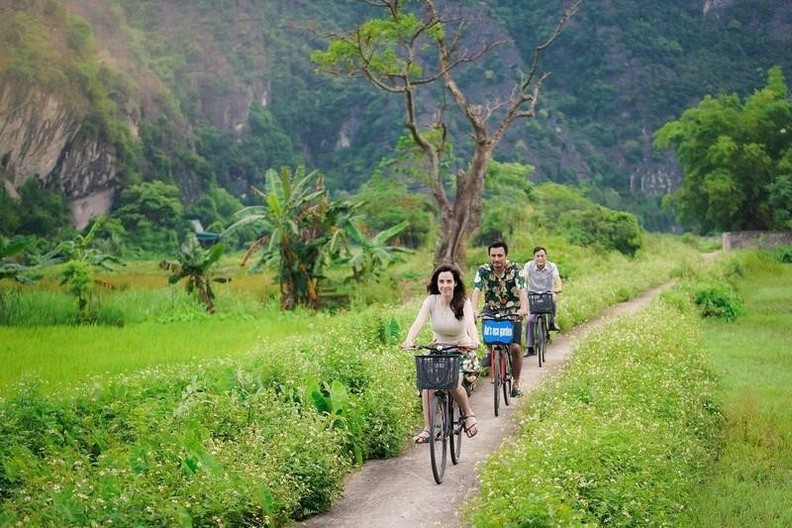The carbon footprint in tourism is the total amount of greenhouse gases, primarily carbon dioxide (CO2), emitted during a trip. This includes emissions from all activities, from transportation, food and beverage, lodging, and entertainment.

Although tourism is called a green and smokeless industry, it still accounts for a fairly large proportion of emissions. The industry is projected to emit 6.5 billion tons of carbon emissions by 2025, about 13% of global greenhouse gas emissions. Aviation is the largest contributor, with 25% of tourism’s carbon footprint.
Given the situation, controlling carbon emissions and reducing the tourism industry's carbon footprint becomes an urgent task.
Dr Vo Tri Thanh, former Deputy Director of the Central Institute for Economic Management, said that tourism should be first and foremost among the areas to be the focus of the green transition in Vietnam because it directly serves people.
The green transition also plays a decisive factor in increasing the tourism sector’s competition and national image.
Most tourists today, especially the youth, are not only interested in experiencing, exploring, and enjoying their trip, but they also want to contribute to sustainable development and environmental protection.
According to a Booking.com survey in 2023, up to 97% of Vietnamese tourists wanted to travel more sustainably in the next year.
Data from the World Bank showed that in 2022, Vietnam's carbon footprint was about 344 million tonnes of CO2/year, ranking as the 17th largest emitter of greenhouse gas emissions globally, surpassing many other countries in the region.
Therefore, reducing the carbon footprint in tourism will also significantly contribute to improving Vietnam's carbon footprint on the world map.

Most tourists today, especially the youth, are not only interested in experiencing, exploring, and enjoying their trip, but they also want to contribute to sustainable development and environmental protection. (Photo: Booking.com)
According to experts, determining the carbon footprint is an important task that the tourism industry needs to prioritise to develop Net Zero tourism - a goal to reduce carbon emissions to a level that can be absorbed by nature and other methods, leaving zero in the atmosphere.
However, it’s difficult to determine the tourism industry's carbon footprint because it is a comprehensive economic sector with many activities such as food and beverage, accommodation, and transportation, making it difficult to identify emission sources and inventory greenhouse gases.
The tourism industry needs to develop a set of emission reduction criteria for businesses to control and design appropriate strategies. Based on the set of criteria, relevant agencies can measure emission levels in businesses' tourism activities while identifying areas that need improvement.
The green transition in every component of tourism requires the participation of all parties, especially tourists, businesses, and local communities, as well as specific and practical policies from the Government.
At the same time, it is necessary to foster green transition in every component of tourism. This process requires the participation of all parties, especially tourists, businesses, and local communities, as well as specific and practical policies from the Government.
Air travellers are recommended to reduce overall flight carbon emissions by reducing their luggage weight, choosing direct flights over connecting flights, and using electronic air tickets.
Once arriving at the destination, tourists should choose environmentally friendly accommodations, walk or cycle whenever possible, and say no to plastic straws and plastic souvenir bags when shopping locally during their trip.
Practising such small things is a practical way to reduce carbon emissions, thus contributing to protecting our living environment.
Minh Anh - Translated by NDO
















